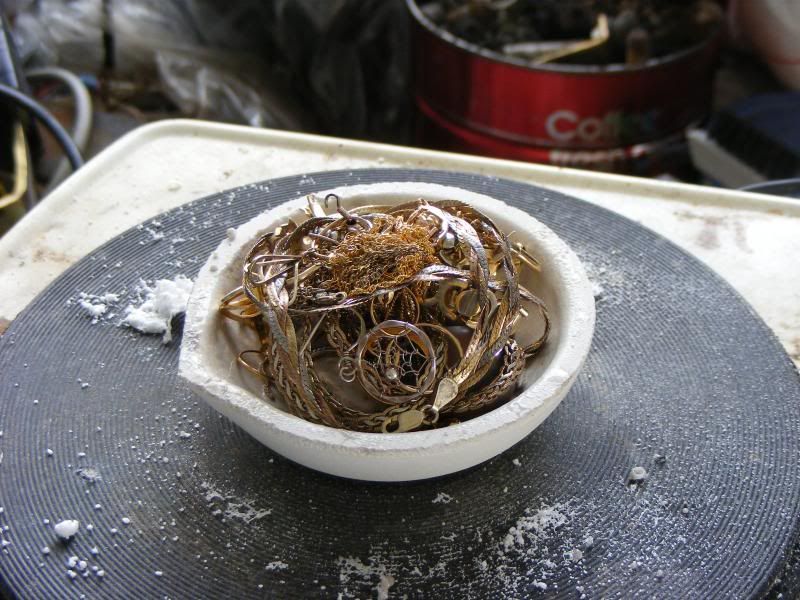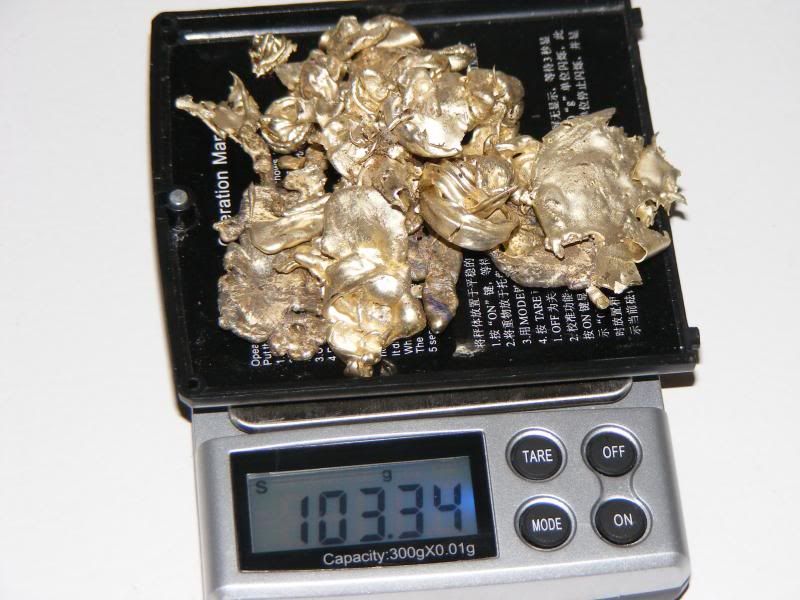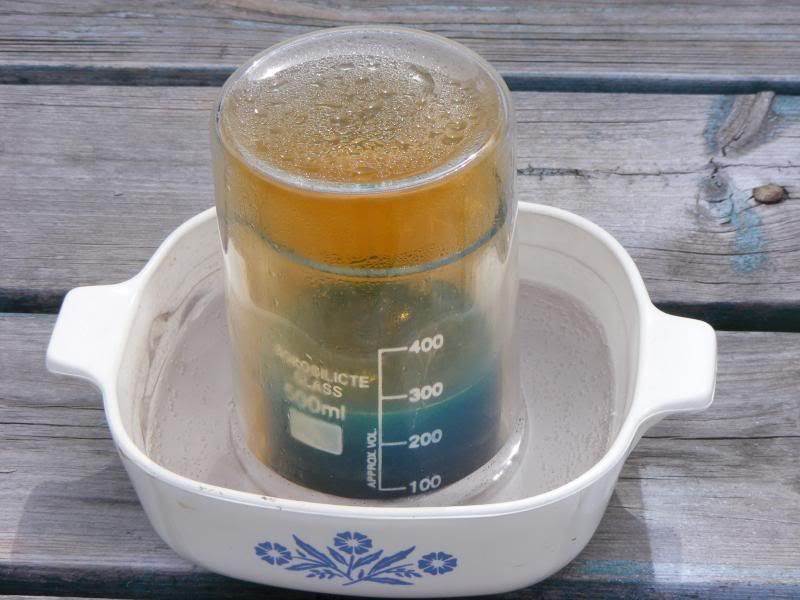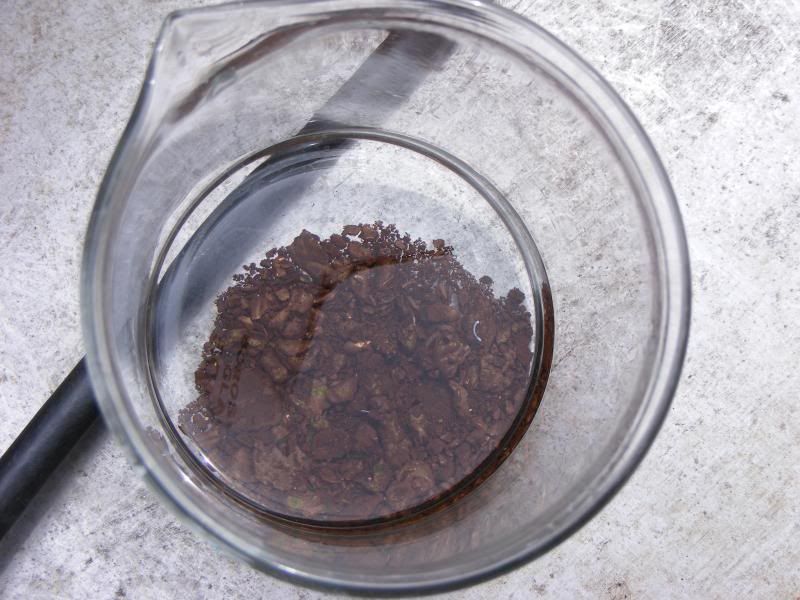Hopefully I did the math right. I had;
23.68g of 10K = 9.86g 24K Au (assumed)
17.68g of 14K = 10.31g 24K Au (assumed)
10.22g of unknown karat, I assumed it was at least 14K = 5.96g 24K Au
So, estimated total 24K Au is 26.134 x 4 = 104.53g of 6K karat inquarted
104.53g - 51.58g karat gold = 52.95g of sterling to add
The karat gold without hallmarks I tested with 50/50 nitric and as far as I can tell it was real. There were a few plated items that the nitric brought to my attention that were pulled from the pile.
I added 52.53g of sterling, melted and cornflaked. I know, a bit off. I came out with 103.3g of 6K
Now correct me if I'm wrong... I need 2.55ml of 50/50 nitric for each gram of 6K gold?
That would be 263.5ml total.
Now, I inquarted with sterling not 999 silver, will that make a big difference in the nitric needed?
Or maybe I'm overthinking this all and should just get on with it :lol:


23.68g of 10K = 9.86g 24K Au (assumed)
17.68g of 14K = 10.31g 24K Au (assumed)
10.22g of unknown karat, I assumed it was at least 14K = 5.96g 24K Au
So, estimated total 24K Au is 26.134 x 4 = 104.53g of 6K karat inquarted
104.53g - 51.58g karat gold = 52.95g of sterling to add
The karat gold without hallmarks I tested with 50/50 nitric and as far as I can tell it was real. There were a few plated items that the nitric brought to my attention that were pulled from the pile.
I added 52.53g of sterling, melted and cornflaked. I know, a bit off. I came out with 103.3g of 6K
Now correct me if I'm wrong... I need 2.55ml of 50/50 nitric for each gram of 6K gold?
That would be 263.5ml total.
Now, I inquarted with sterling not 999 silver, will that make a big difference in the nitric needed?
Or maybe I'm overthinking this all and should just get on with it :lol:








